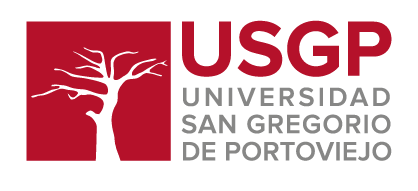Cultural City Brands And Global Competitiveness
Palabras clave:
place brand, cultural brand, cultural identity, imperial city, breakthrough positioningResumen
This article deals with the problem of a city's cultural identity, which allows us to develop a strong city brand and ensure its global competitiveness. The authors analyzed the basic conceptual approaches to identifying a city’s cultural identity. They concluded that the imperial and global level of the city influences the development of its cultural identity and contributes to the growth of its brand value.
The authors analyzed the cultural identity of cities, which is essentially based on the imperial role and global prevalence of cultural imperatives. This work shows that cities may not be characterized by the imperial essence and global orientation from throughout their historical development. The imperial essence and global orientation of the city can develop for a certain period of the city’s history. However, when the cultural context changes and its influence in the cultural, economic and social space weakens, the city also loses its imperial or global status.
The article also reveals new patterns in the formation of key attributes of a city brand and the development of its cultural identity. The identified patterns are applied in the evaluation of the global competitiveness of a city, within the framework of a breakthrough strategy implementation in the place market. In accordance with the proposed assessment system, a model of city competitiveness was developed and tested in four cities with strong brands and evident cultural identity. These cities also met the requirements for an imperial level of development, globalism, and a breakthrough positioning strategy.
Implementation of this model also contributed to the development of new recommendations on the breakthrough positioning of city brands based on their cultural identity, including the imperial essence and globalism of the city.
Descargas
Referencias
Kamenica, E. (2017). Information economics. Journal of Political Economy. 125(6). 1885-1890.
Segerstrom, P.(1991). Innovation, imitation, and economic growth. Journal of Political Economy. 99(4). 807-827.
Anttiroiko, A.-V.(2014). The Political Economy of City Branding. Routledge. London.
Kavaratzis, M., Hatch, M.J.(2013). The dynamics of place branding: an identity-based approach to place branding Theory. Marketing Theory. 13(1). 69-86. doi: 10.1177/1470593112467268
Närvänen, E., Goulding,Ch. (2016). Sociocultural brand revitalization: The role of consumer collectives in bringing brands back to life. European Journal of Marketing. 50 (7/8), 1521-1546.https://doi.org/10.1108/EJM-05-2014-0328
Keller, K.L.(2012). Economic and behavioral perspectives on brand extension. Marketing Science. 31(Sept.-Oct.). 772-775.
Sassen, S. (2005). When National Territory is Home to the Global: Old Borders to Novel Borderings. New Political Economy. 10(4). 523-41.
Mirzoeff, N. (2015). How to see the world. London. Pelican,
Socio-cultural sphere in the new economy: from the development of education to the art market. (2019). Ed. by Starobinskaya, N.M.. St. Petersburg. KultInformPress.
Rogov, M., Rozenblat, C. (2018). Urban Resilience Discourse Analysis: Towards a Multi-Level Approach to Cities. Sustainability. 10(12). 4431. https://doi.org/10.3390/su10124431
Sassen, S. (2005). The Global City: Introducing a Concept. Brown Journal of World Affairs. 11(2). 27-43.
Baumgarth, C., O’Reilly, D. (2014). Brands in the arts and culture sector. Arts Marketing: An International Journal. 4(1/2). 2-9 https://doi.org/10.1108/AM-08-2014-0028
Kotler, P., Gertner, D. (2002). Country as brand, product, and beyond: a place marketing and brand management perspective. Journal of Brand Management. 9 (4-5). 249-261. doi: http://dx.doi.org/10.1057/palgrave.bm.2540076
Epstein, D., Jackson, R., Braithwaite, P. (2011). Delivering London 2012: Sustainability Strategy. Civil Engineering. 164(5). 27-33.
The Art Market 2019. An Art Basel & UBS Report. (2019). Basel: Art Basel.
Alpatov, G.E., Ermakov, Yu.V. (2019). On the issue of investments in art objects: art indices. Marketing MBA. Marketing management firms. 10(1). 5-20.
Pashkus, M.V. (2016). Analysis of the investment attractiveness of the art market objects. Marketing МВА. Marketing management firms. 7(3). 18-39.
Pashkus, N.А., Pashkus, V.Y., Pashkus, M.V. (2016). Evaluation of City Brand in the Global Economy: Techniques and Perspectives. Globalization and its Socio-Economic Consequences. 16th International Scientific Conference Proceedings. ZU - University of Zilina, 5th -6th October 2016, Rajecke Teplice. Zilina, Slovakia, 1635-1641
Keller, K.L. (2012). Building Rich Brand Relationships: Research Dialogue on Brands As Intentional Agents. Journal of ConsumerPsychology. 22(2). 186-190.
Dinnie, K. (2011). City Branding: Theory and Cases. Palgrave Macmillan.
Greenberg, M. (2008). Branding New York: How a City in Crisis Was Sold to the World. Routledge Taylor & Francis Group.
Anholt, S., Hildreth, J. (2010). Brand America: The Making, Unmaking and Remaking of the Greatest National Image of All Time. London: Marshall Cavendish Corporation.
Cagan, J., Vogel, C.M., (2001). Creating Breakthrough Products. Innovation from Product Planning to Program Approval. London: FT Press.
Pashkus, V., Pashkus, N., Pashkus, M. (2018). Strategic positioning of territories in the global economy: brand development in accordance with the matrix of competitiveness of territories. Globalization and its Socio-Economic Consequences. 18th International Scientific Conference Proceedings. Zilina, Rajecke Teplice, Slovak Republic, 2727-2734.
Foroudi, P. et al. (2016). A framework of place branding, place image, and place reputation: Antecedents and moderators. Qualitative Market Research: An International Journal. 19(2). 241-264 https://doi.org/10.1108/QMR-02-2016-0020
Medway, D., Warnaby, G. (2008). Alternative perspectives on marketing and the place brand. European Journal of Marketing. 42(5/6). 641-653
Cherevichko, T.V. (2018). Brand of a tourist destination as a competitive advantage. Bulletin Saratov National Research State University. 5. 118-121
Paskus, N.A. et al. (2016). Strategic marketing: tutorial and workshop for undergraduate and graduate. Urait:Moscow.
Saaty, Th. L. (2008). Relative Measurement and its Generalization in Decision Making: Why Pairwise Comparisons are Central in Mathematics for the Measurement of Intangible Factors - The Analytic Hierarchy. Network Process. Review of the Royal Spanish Academy of Sciences. Series A: Mathematics,102(2), 251–318.



















